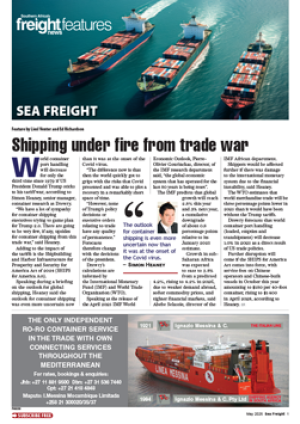Fly ash producer helps build Gauteng
Ever wondered what
happens to the ash
from electricity utility
Eskom’s coal-fired power
stations? The short answer is
that it is blended with cement
to create the high performance
concrete used in the transport,
water and power industries
– including in the current
construction of
561 kilometres
of roads
and major
interchanges
as part of
the Gauteng
Freeway
Improvement
(GFI) project.
Manufacturer
and supplier of
f ly ash products,
Ash Resources,
was founded over 30 years ago
by Eskom and some of South
Africa’s major cement companies
when the need arose for the
country to find innovative ways
to dispose of the the natural
ash created by burning coal for
power stations.
Today, the Gauteng-based
company forms part of Lafarge
South Africa – a subsidiary
of the international Lafarge
Group – and its research and
development team is still
pioneering applications for
f ly ash, including its use in
the production of plastics.
It operates five strategically
located f ly ash processing plants,
integrated with Eskom coalfired
power stations.
Tshepiso Dumasi, managing
director of Ash Resources, told
FTW that 40-60% of ash could
be used in cement to create high
performance concrete, which
made the local product more
affordable and helped conserve
limited limestone resources.
“It also helps to reduce the
usage of scarce water resources
during construction as, when
combined with cement, it
requires a lot less water,” he
explained,
commenting
that the demand
for f ly ash was
therefore quite
high.
However, it
is a low value
product and
the logistics
around it has
to be managed
carefully to
ensure integrity
of the product and to keep costs
down. Dumasi pointed out that
ash, a bulk commodity, was
expensive to transport and that
it was vulnerable to humidity
during transportation so it
made “better business sense”
to establish plants close to the
coal-fired power stations.
“We therefore don’t export
the product beyond the
Southern African Development
Community (SADC) region but
we have helped several emerging
countries – including India
recently – to establish their own
ash plants,” said Dumasi.
He added that the company’s
experience and expertise in f ly
ash meant that it didn’t simply
supply the product but that Ash
Resources worked closely with
consultants, architects and civil
engineers to create effective
solutions for durable concrete
that met the challenges in a
wide range of projects.
“We have provided solutions
on development projects as far
afield as Dubai (for the Burj
Khalifa) and on several iconic
projects in and around Africa,
including the Gauteng Freeway
Improvement project, Soccer
City in Johannesburg, the
Katse Dam in Lesotho and the
construction of the airport on
the remote island of St Helena,”
said Dumisa.
The product is generally
stored in bulk silos close to a
coal-fired power plant and is
transported either in bulk
tankers or special bulk bags,
usually on a f latbed trailer.
“The bags have to be lined
to prevent moisture from
seeping in and damaging
the product,” he said,
noting that due
to the special
packaging
requirements,
this was handled
in-house.
According to
Dumasi, one
of the biggest
challenges in
transporting the
product beyond
South Africa’s
borders is the
congestion and
clearance issues at
border posts. “Trucks
are sometimes
delayed for weeks,
which increases
the risk of
damage to the product,” he said.
Keeping costs down with
over-border shipments is also
a challenge but with several
mining and infrastructure
developments taking place in
SADC countries – especially
Zambia and Namibia – the
transporters can often bring
back another commodity, such
as copper out of Zambia, for
another client on the return trip.
“We also tend to use a
variety of different transport
companies as we like the
f lexibility that comes with that.
Plus it spreads the opportunity
further, especially for
black economic
empowerment
(BEE) companies,”
said Dumasi.
INSERT & CAPTION
We tend to use a variety
of different transport
companies as we like the
flexibility that comes with
that.
– Tshepiso Dumasi

